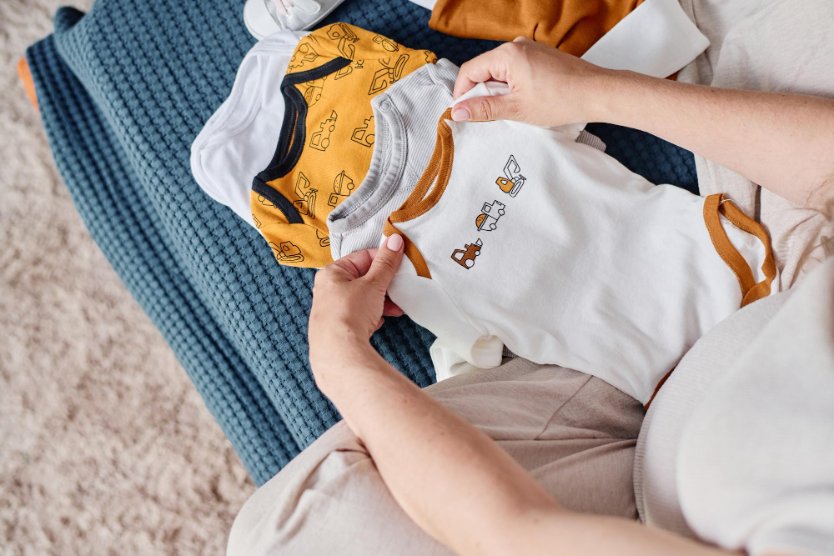Your ultimate guide to choosing safe, comfortable, and sustainable fabrics for your baby’s delicate skin
Quick Answer: Organic cotton certified with GOTS and OEKO-TEX standards is the safest fabric choice for newborn clothing. It’s breathable, hypoallergenic, and free from harmful chemicals that could irritate your baby’s sensitive skin.
Not sure which fabric is right for your baby? Take our interactive fabric selection quiz to get personalized recommendations based on your baby’s specific needs.
Table of Contents
- Why Fabric Choice Matters for Newborns
- Essential Safety Certifications to Look For
- Best Fabrics for Newborn Clothing
- Specialized Fabrics for Maximum Comfort
- Fabrics to Avoid for Newborns
- Age-Specific Fabric Recommendations
- 2025 Fabric Innovations and Trends
- Fabric Care and Maintenance Guide
- Sizing and Fit Considerations
- Frequently Asked Questions
Why Fabric Choice Matters for Newborns

Choosing the right fabric for newborn clothing isn’t just about comfort—it’s about safety, health, and your baby’s overall well-being. The materials that touch your baby’s skin play a crucial role in preventing irritation and maintaining proper temperature regulation.
Understanding Newborn Skin Sensitivity
Newborn skin is remarkably different from adult skin. It’s up to 30% thinner and much more permeable, making babies extremely sensitive to rough textures and harsh chemicals. Their skin barrier is still developing during the first few months of life, which means even small irritants can cause significant discomfort.
Skin Thickness
30% thinner than adult skin
Permeability
Higher absorption rate
pH Level
More alkaline than adult skin
Temperature Control
Still developing regulation
Watch for signs of skin sensitivity like red patches, rashes, or unusual fussiness when wearing certain clothes. These reactions often indicate that the fabric contains irritants or isn’t suitable for your baby’s delicate skin.
Safety Considerations in Fabric Selection
Critical Safety Checklist
- Choose flame-resistant materials for sleepwear
- Avoid clothes with small buttons or decorative pieces
- Ensure secure seams and construction
- Look for non-toxic dyes and chemical-free processing
- Check proper fit (not too loose or tight)
Safety extends beyond just the fabric material. Look for clothes specifically labeled for newborns, as these meet strict safety standards. Always check garment care labels for proper washing instructions to maintain fabric integrity and safety over time.
Essential Safety Certifications to Look For
Understanding fabric certifications is crucial for making informed decisions about your baby’s clothing. These certifications provide assurance that textiles have been tested for safety and produced under specific standards.
GOTS Certification Explained
The Global Organic Textile Standard (GOTS) is the most comprehensive certification for organic textiles. It covers the entire supply chain from farming to manufacturing, ensuring both environmental and social responsibility.
| GOTS Requirements | What It Means for Your Baby |
|---|---|
| Minimum 70% organic fibers | Reduced exposure to synthetic chemicals |
| Prohibited harmful substances | No toxic dyes, formaldehyde, or heavy metals |
| Environmental standards | Cleaner production process |
| Social responsibility | Ethical manufacturing practices |
OEKO-TEX Standards
OEKO-TEX offers several certification levels, with Standard 100 being most relevant for baby clothing. This certification tests every component of a textile product for harmful substances.
OEKO-TEX Product Classes for Babies
Class I: Products for babies and children up to 3 years (strictest requirements)
Class II: Products with direct skin contact
Class III: Products without direct skin contact
Class IV: Home textiles and decorative materials
GOTS vs OEKO-TEX: Key Differences
GOTS: Holistic approach covering organic farming, environmental impact, and social responsibility
OEKO-TEX: Focuses primarily on chemical safety in the final product
Best Choice: Look for both certifications together for maximum safety and sustainability
Important Timeline
As of March 2024, OEKO-TEX certified baby products must meet strict PFAS limits (under 10 ppm)
Non-baby products will meet these standards by March 2025
Always verify certifications using official databases
Best Fabrics for Newborn Clothing
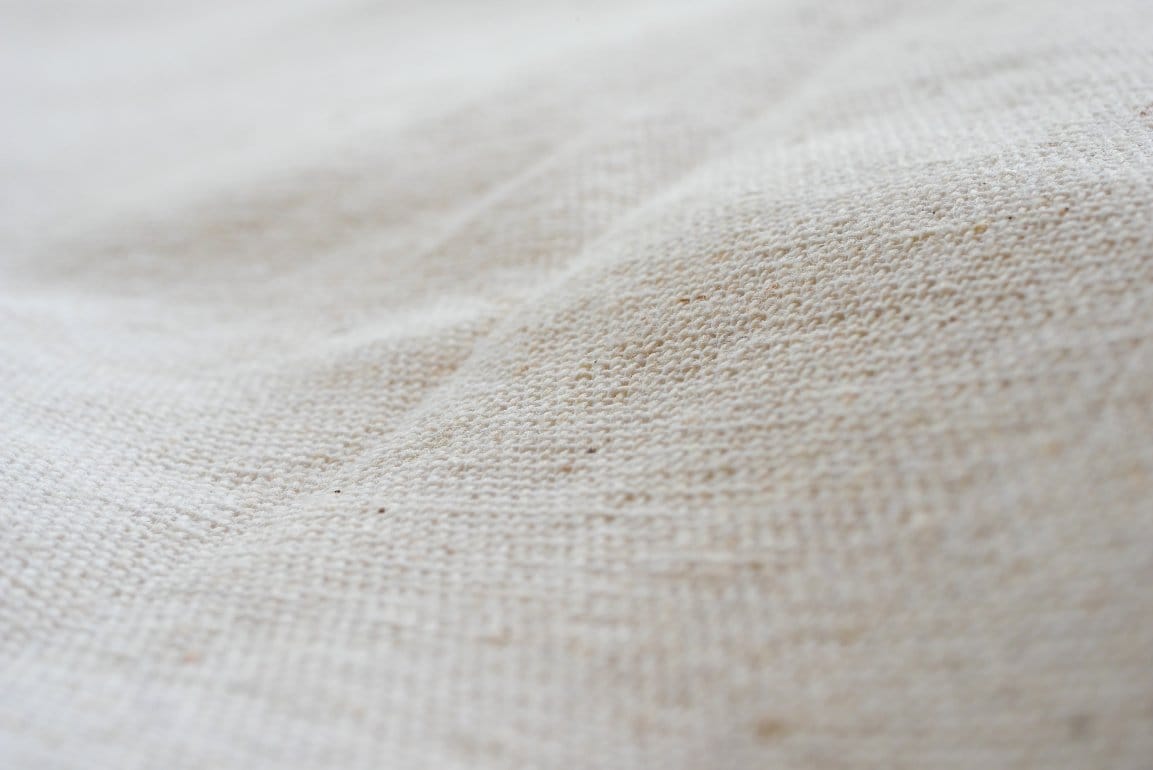
Organic Cotton: The Gold Standard
Organic cotton stands out as the safest and most practical choice for newborn clothing. Unlike conventional cotton, organic cotton is grown without synthetic pesticides, fertilizers, or genetically modified seeds.
Breathability
Excellent air circulation
Hypoallergenic
Naturally gentle on skin
Durability
Gets softer with washing
Temperature Control
Adapts to body temperature
Why Organic Cotton Works Best
- No harmful chemical residues
- Excellent moisture absorption
- Machine washable and easy care
- Available in various weights and weaves
- Affordable and widely available
Considerations
- Can shrink if washed in hot water
- May wrinkle more than synthetic blends
- Takes longer to dry than synthetic materials
- Requires proper pre-washing before first use
Bamboo Fabric: Eco-Friendly and Soft
Bamboo fabric offers exceptional softness and natural antimicrobial properties. When processed responsibly (look for closed-loop production), bamboo becomes an excellent eco-friendly choice for sensitive baby skin.
The natural properties of bamboo include built-in temperature regulation and moisture-wicking capabilities. This makes it particularly suitable for babies who tend to get warm or live in humid climates.
Bamboo Fabric Benefits
- Naturally antibacterial: Helps prevent odor-causing bacteria
- UV protection: Natural SPF properties
- Moisture-wicking: Keeps baby dry and comfortable
- Sustainable: Fast-growing renewable resource
Merino Wool: Natural Temperature Control
High-quality merino wool, particularly organic varieties, provides excellent temperature regulation for newborns. Unlike traditional wool, merino is incredibly soft and rarely causes itching.
Merino wool’s unique fiber structure allows it to absorb moisture while still feeling dry to the touch. This natural performance makes it ideal for sleep clothing and layering pieces.
Specialized Fabrics for Maximum Comfort
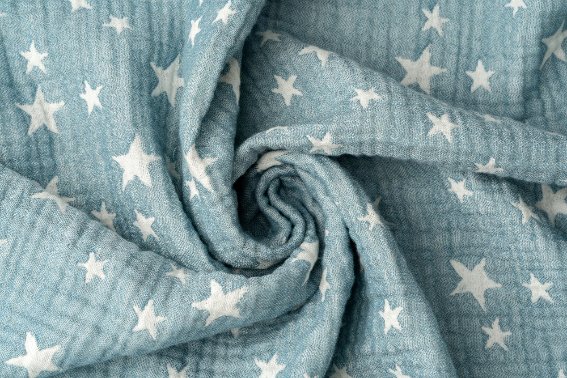
Jersey Knit: Flexibility for Growing Babies
Jersey knit fabrics, particularly those made from organic cotton, offer superior stretch and comfort. The four-way stretch allows babies to move freely without restriction, making diaper changes and dressing much easier.
Muslin: Lightweight and Versatile
Muslin’s loose, open weave creates natural airflow that helps regulate temperature. This makes it perfect for swaddles, sleep sacks, and lightweight clothing in warmer weather.
Muslin Care Tips
- Gets softer with each wash
- Machine washable in warm water
- Dries quickly due to loose weave
- Can be layered for added warmth
Fabrics to Avoid for Newborns
Understanding which fabrics to avoid is just as important as knowing which ones to choose. Some materials can cause irritation, overheating, or pose safety risks for newborns.
Synthetic Fabrics and Their Risks
| Fabric to Avoid | Why It’s Not Suitable | Better Alternative |
|---|---|---|
| 100% Polyester | Poor breathability, can trap heat and moisture | Organic cotton or cotton-polyester blend (max 20% polyester) |
| Nylon | Non-breathable, can cause static and discomfort | Natural fiber alternatives |
| Acrylic | Can pill easily, poor moisture management | Merino wool or organic cotton |
| Conventional Cotton (with chemical treatments) | May contain pesticide residues and harsh dyes | GOTS-certified organic cotton |
Is Polyester Safe for Babies?
While 100% polyester isn’t ideal for newborns, small amounts (typically under 20%) in cotton blends can be acceptable for certain items like stretch pants or outer layers. The key is ensuring the polyester doesn’t directly contact sensitive skin areas.
Polyester Guidelines for Baby Clothes
- Avoid 100% polyester for clothing that touches skin directly
- Cotton-polyester blends (80/20 or 90/10) can work for outerwear
- Never use polyester for sleepwear due to breathability concerns
- Check for OEKO-TEX certification even with polyester blends
Age-Specific Fabric Recommendations
Different developmental stages require different fabric considerations. What works for a newborn may not be ideal for a crawling 6-month-old or an active toddler. Use our seasonal baby clothing planner to organize your baby’s wardrobe by age and season.
Newborn (0-2 months)
Best Fabrics: Organic cotton muslin, soft jersey knit
Priority: Ultimate softness and breathability
Avoid: Anything with texture or rough seams
Infant (2-6 months)
Best Fabrics: Organic cotton, bamboo blends
Priority: Easy care and durability
Features: Snap closures, stretch for movement
Mobile Baby (6-12 months)
Best Fabrics: Durable cotton knits, merino wool
Priority: Flexibility and easy washing
Features: Reinforced knees, non-slip elements
Toddler (12+ months)
Best Fabrics: Durable cotton blends, performance fabrics
Priority: Durability and active play support
Features: Stain resistance, quick-dry properties
2025 Fabric Innovations and Trends
The baby clothing industry continues to evolve with new technologies and materials that prioritize both safety and performance. Here are the key innovations shaping baby fashion in 2025.
Smart Textiles for Baby Comfort
Temperature-regulating fabrics are becoming more common in baby clothing. These materials use phase-change technology to help maintain optimal body temperature, reducing the risk of overheating.
2025 Fabric Innovations
- Tencel (Eucalyptus fiber): Softer than bamboo, naturally antimicrobial
- Hemp-cotton blends: Increasing durability while maintaining softness
- Recycled organic cotton: Sustainable option with familiar properties
- Smart temperature regulation: Fabrics that adapt to body heat
Sustainable and Multi-Functional Clothing
Parents are increasingly seeking clothing that serves multiple purposes, grows with the baby, or can be easily passed down. This trend toward sustainable fashion is driving innovation in fabric durability and design.
Fabric Care and Maintenance Guide
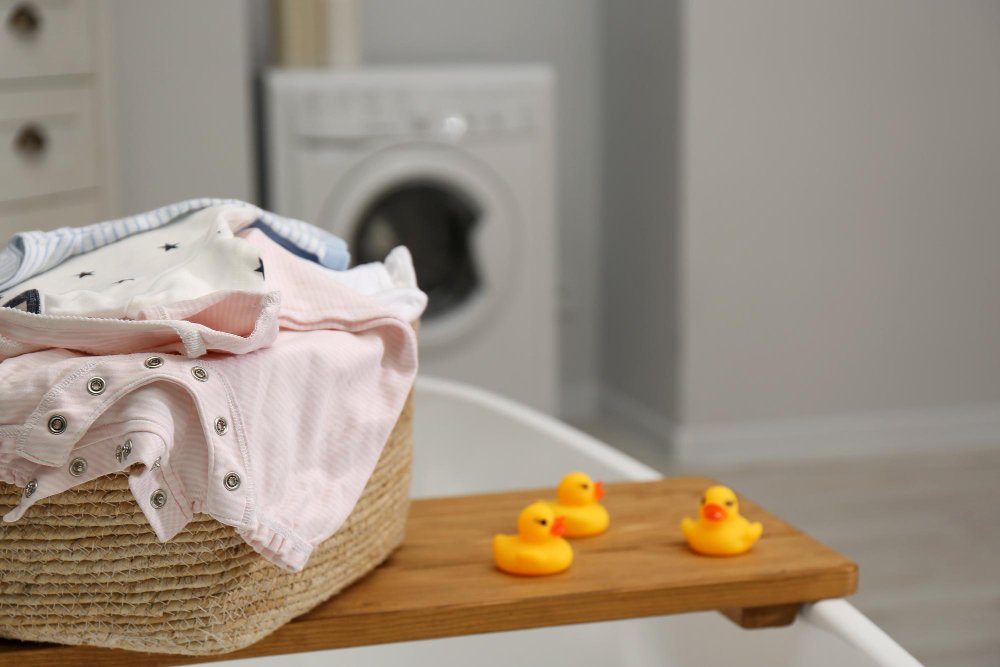
Proper care extends the life of baby clothes and maintains their safety properties. Different fabrics require specific care approaches to preserve their benefits. For personalized care instructions based on your specific fabric types, use our fabric care instruction generator.
Washing Guidelines by Fabric Type
| Fabric Type | Water Temperature | Detergent | Drying Method |
|---|---|---|---|
| Organic Cotton | Warm (30-40°C) | Gentle, fragrance-free | Medium heat or air dry |
| Bamboo | Cool to warm (30°C) | Mild detergent | Low heat or air dry |
| Merino Wool | Cool (30°C) | Wool-specific detergent | Air dry flat |
| Muslin | Warm (40°C) | Regular baby detergent | Any heat setting |
Universal Baby Clothing Care Tips
- Always wash new clothes before first use
- Use fragrance-free, hypoallergenic detergents
- Avoid fabric softeners (they can reduce absorption)
- Turn clothes inside out to protect prints and colors
- Separate dark and light colors for first few washes
- Check for loose threads or damaged seams regularly
Need specific care instructions? Generate personalized washing and care guides with our baby fabric care instruction tool.
Stain Removal for Baby Clothes
Baby clothes face unique staining challenges. Here’s how to handle common stains while preserving fabric integrity:
- Milk/Formula: Rinse immediately with cold water, then wash normally
- Baby food: Scrape off excess, treat with enzyme detergent
- Diaper leaks: Rinse in cold water, use oxygen bleach if needed
- Spit-up: Blot (don’t rub), rinse with cool water
Sizing and Fit Considerations
Choosing the right size is crucial for both comfort and safety. Ill-fitting clothes can pose risks and cause discomfort for newborns.
Should I Buy Newborn Size or 0-3 Months?
This is one of the most common questions new parents face. The answer depends on your baby’s expected birth weight and growth rate:
Choose Newborn Size If:
- Baby is expected to weigh under 7.5 pounds
- You want clothes that fit immediately
- Planning professional newborn photos
- You have backup larger sizes ready
Choose 0-3 Months If:
- Baby is expected to weigh over 8 pounds
- You want longer-lasting clothes
- Budget is a primary concern
- You prefer room for growth
The Rule for Newborn Clothes Fit
Follow the “comfortable loose” rule: clothes should be easy to put on and take off, with room for movement, but not so loose that they pose safety risks.
Four Things to Avoid with Newborn Clothing
- Tight neck openings: Should stretch easily over baby’s head
- Loose strings or ties: Strangulation hazard, especially around neck
- Small decorative elements: Buttons, beads, or appliques that could come off
- Rough internal seams: Can irritate sensitive skin
What Are the Easiest Clothes for Newborns to Wear?
The easiest newborn clothes prioritize accessibility for diaper changes and comfortable dressing:
- Kimono-style tops: Wrap around without going over the head
- Zip-up sleepers: One-piece garments with full-length zippers
- Snap-bottom onesies: Easy diaper access
- Magnetic closures: Quick and quiet for night changes
- Two-way zippers: Allow diaper changes without full undressing
Frequently Asked Questions
Organic cotton with GOTS certification is the best fabric for newborns. It’s breathable, hypoallergenic, free from harmful chemicals, and gentle on sensitive skin. Look for soft weaves like jersey knit or muslin for optimal comfort.
Yes, 100% cotton is excellent for babies, especially organic varieties. Cotton is naturally breathable, absorbent, and hypoallergenic. It gets softer with each wash and allows proper air circulation to prevent overheating.
The best newborn clothes are simple, functional pieces made from organic cotton: onesies with snap bottoms, kimono-style tops, zip-up sleepers, and soft pants. Prioritize easy diaper access and avoid complicated fastenings.
Cotton is significantly better for newborns. Pure polyester doesn’t breathe well and can trap heat and moisture. While small amounts of polyester (under 20%) in cotton blends can add stretch, 100% cotton or cotton-dominant blends are safer choices.
Avoid 100% synthetic fabrics like polyester, nylon, and acrylic for direct skin contact. Also avoid conventional cotton with chemical treatments, wool that hasn’t been specifically processed for babies, and any fabric with loose fibers or rough textures.
Viscose can be safe for babies if it’s high-quality and OEKO-TEX certified. However, some viscose is processed with harsh chemicals. Look for eco-friendly viscose like Tencel or modal, which are processed more sustainably and are gentler on skin.
Both are excellent choices. Muslin (which is actually a type of cotton weave) is particularly good for swaddles and warm weather due to its open weave and breathability. Regular cotton is better for everyday clothing and cooler weather.
A complete set of newborn clothes is called a “layette.” This typically includes onesies, sleepers, pants, hats, mittens, and socks – everything needed for a baby’s first few weeks. You can learn more about building a complete baby layette checklist.
The best newborn wraps are made from organic cotton muslin or bamboo fabric. These materials are lightweight, breathable, and become softer with washing. Look for large squares (at least 47×47 inches) that allow for proper swaddling techniques.
The most important characteristics are breathability, softness, hypoallergenic properties, and ease of care. The fabric should regulate temperature, not irritate sensitive skin, and withstand frequent washing while maintaining its safety properties.
Environmental Impact and Sustainability
Choosing sustainable fabrics for baby clothes isn’t just good for your child – it’s important for the planet they’ll inherit. Understanding the environmental impact of different fabric choices helps you make responsible decisions.
Carbon Footprint Comparison
| Fabric Type | Water Usage | Carbon Footprint | Biodegradability |
|---|---|---|---|
| Organic Cotton | Moderate (rain-fed farming) | Low | 100% biodegradable |
| Conventional Cotton | High (irrigation needed) | Moderate | Biodegradable |
| Bamboo (responsibly processed) | Low | Very Low | 100% biodegradable |
| Hemp | Very Low | Very Low | 100% biodegradable |
| Polyester | Moderate | High | Not biodegradable |
Circular Economy Approaches
Consider the full lifecycle of baby clothes when making purchases. Quality natural fabrics not only last longer but can be:
- Passed down: High-quality organic cotton maintains its integrity through multiple children
- Repurposed: Old baby clothes can become cleaning cloths or craft materials
- Composted: 100% natural fibers break down safely in compost
- Recycled: Some brands now accept old clothes for recycling into new garments
For tips on extending the life of baby clothes, check out our guide on reusing baby clothes effectively.
Shopping Tips and Brand Recommendations
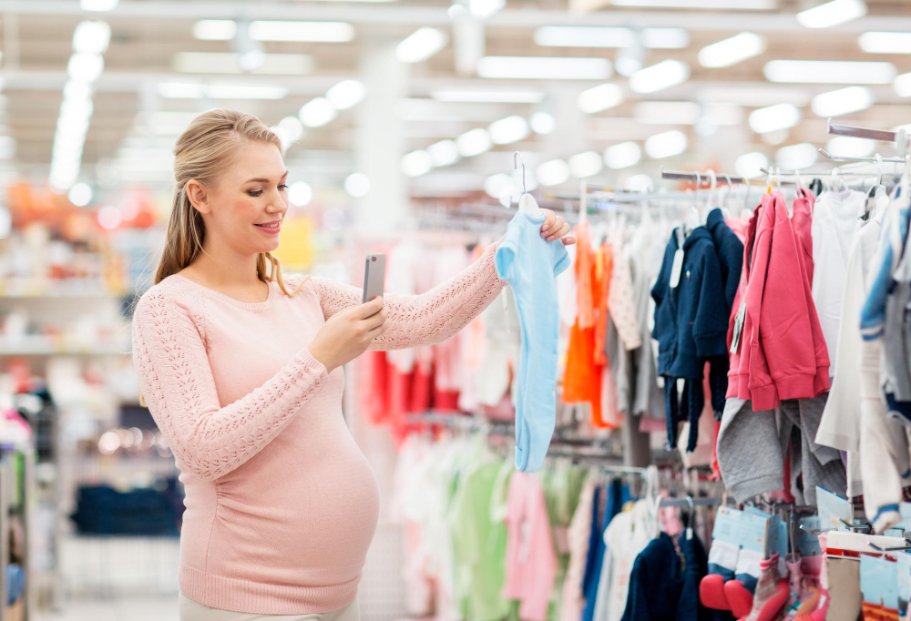
Knowing what to look for when shopping can help you make better fabric choices for your baby’s wardrobe.
Reading Fabric Labels Like a Pro
Label Reading Checklist
- Look for fiber content percentage (aim for 70%+ natural fibers)
- Check for certification logos (GOTS, OEKO-TEX, Cradle to Cradle)
- Verify country of origin for quality expectations
- Read care instructions to understand maintenance requirements
- Look for “pre-shrunk” labels to avoid sizing issues
Budget-Friendly Sustainable Options
Sustainable doesn’t always mean expensive. Here are ways to choose better fabrics without breaking the bank:
- Invest in basics: Buy fewer, higher-quality pieces that last longer
- Shop secondhand: High-quality organic clothes often look great after gentle use
- Choose versatile pieces: Items that work in multiple seasons and occasions
- Look for sales: Many sustainable brands offer seasonal discounts
- Consider clothing swaps: Exchange outgrown clothes with other parents
For more budget-conscious shopping tips, explore our guide to budget-friendly baby clothes.
Special Considerations for Different Conditions
Fabrics for Babies with Eczema
Babies with eczema or other skin conditions need extra-gentle fabrics. The key is minimizing potential irritants while maximizing comfort.
Best for Eczema
Organic cotton, bamboo, silk (mulberry)
Avoid Completely
Wool, synthetic blends, conventional cotton
Weave Preference
Smooth, tight weaves over loose or textured
Seam Requirements
Flat seams or seamless construction
For comprehensive guidance on this topic, read our detailed article about choosing hypoallergenic clothing for babies.
Premature Baby Fabric Needs
Premature babies have even more delicate skin and temperature regulation challenges. They need the softest, most gentle fabrics available.
- Ultra-soft organic cotton: Look for jersey knits with the highest thread count
- Seamless or flat-seam construction: Minimize any potential pressure points
- Temperature-regulating properties: Merino wool or bamboo for natural temperature control
- Easy-access designs: Medical equipment compatibility is crucial
Learn more about what to look for in preemie clothing to ensure comfort and safety.
Seasonal Fabric Considerations
Summer Fabrics for Newborns
Hot weather requires fabrics that prioritize cooling and moisture management while still protecting delicate skin. Planning your baby’s summer wardrobe? Our seasonal clothing timeline planner helps you prepare the right fabrics for each season.
| Summer Need | Best Fabric Choice | Why It Works |
|---|---|---|
| Maximum breathability | Organic cotton muslin | Open weave allows air circulation |
| Moisture wicking | Bamboo blends | Natural moisture-absorption properties |
| UV protection | Tightly woven organic cotton | Provides natural sun protection |
| Quick drying | Linen-cotton blends | Fast moisture evaporation |
For complete guidance on hot weather dressing, check our article on dressing newborns for summer heat.
Winter Fabrics for Warmth
Cold weather fabrics need to provide warmth without overheating, while maintaining breathability for temperature regulation.
- Merino wool base layers: Natural temperature regulation
- Organic cotton flannel: Soft brushed surface for warmth
- Bamboo-cotton blends: Moisture management with insulation
- Layering systems: Multiple thin layers of natural fabrics
Discover our complete guide to must-have winter clothes for babies for seasonal wardrobe planning.
Quality Indicators and What to Look For
Fabric Quality Assessment
Learning to assess fabric quality helps you make better purchasing decisions and ensure you’re getting value for money.
Quality Check Process
- Feel Test: Quality fabrics feel smooth and substantial, not thin or rough
- Stretch Test: Fabric should return to original shape after gentle stretching
- Color Test: Colors should be even with no bleeding or fading visible
- Seam Inspection: Check for straight, secure stitching with no loose threads
- Wash Test: Quality fabrics maintain their properties after washing
Understanding Thread Count and Weight
For baby clothes, thread count and fabric weight affect both comfort and durability:
- Thread count: Higher isn’t always better; 200-400 is ideal for baby cotton
- Fabric weight: Measured in GSM (grams per square meter)
- Lightweight (100-150 GSM): Summer clothes, swaddles
- Medium weight (150-200 GSM): Year-round basics
- Heavyweight (200+ GSM): Winter clothes, outerwear
For a broader understanding of different fabric types and their properties, explore our comprehensive guide to common fabric types and their uses.
Future Trends and Innovations
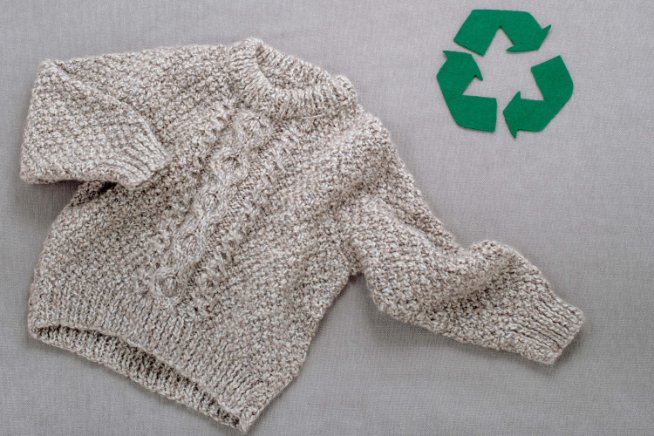
Emerging Sustainable Materials
The future of baby clothing includes exciting new materials that combine sustainability with performance:
- Peace Silk: Cruelty-free silk production methods
- Recycled cotton: High-quality cotton made from textile waste
- Algae-based fibers: Completely renewable and biodegradable
- Lab-grown materials: Biofabricated alternatives to traditional textiles
Stay updated with the latest developments by following our 2025 fabric trends coverage.
Technology Integration
Smart textiles are beginning to enter the baby clothing market, offering features like:
Smart Textile Features for Babies
- Temperature monitoring: Fabrics that change color with temperature
- Moisture alerts: Indicators for diaper changes
- Sleep tracking: Integrated sensors for monitoring rest patterns
- Antimicrobial treatments: Natural, safe bacteria-fighting properties
For insights into how children’s fabric selection is evolving with new technologies and safety standards, expert resources provide valuable guidance for parents.
Conclusion
Choosing the right fabrics for newborn clothing is one of the most important decisions you’ll make for your baby’s comfort, safety, and health. Throughout this comprehensive guide, we’ve explored the critical factors that should influence your fabric choices, from understanding your baby’s sensitive skin needs to recognizing quality certifications and sustainable options.
Key Takeaways and Recommendations
The gold standard remains organic cotton with GOTS and OEKO-TEX certifications. This combination ensures your baby’s clothes are free from harmful chemicals, produced sustainably, and gentle on delicate skin. When shopping, always prioritize these certifications over marketing claims or attractive prices.
Natural fibers consistently outperform synthetic materials for newborn clothing. Organic cotton, responsibly-processed bamboo, and high-quality merino wool offer the breathability, temperature regulation, and hypoallergenic properties that growing babies need. While small amounts of synthetic materials can add functionality, avoid 100% synthetic fabrics for direct skin contact.
Age-appropriate fabric choices evolve with your child’s development. Newborns need the ultimate in softness and simplicity, while mobile babies require more durable, flexible fabrics. Understanding these changing needs helps you make smarter purchasing decisions and avoid waste.
Proper care and maintenance extend fabric life and safety. Following appropriate washing guidelines, using gentle detergents, and avoiding fabric softeners preserve the beneficial properties of quality fabrics. This approach not only saves money but ensures continued safety for your child.
Environmental and Economic Considerations
Investing in higher-quality, sustainable fabrics benefits both your family and the environment. While organic and certified fabrics may cost more initially, they typically last longer, maintain their properties through multiple washes, and can be safely passed down to siblings or other families. This approach reduces waste and provides better value over time.
Consider the full lifecycle of baby clothes when making purchases. Quality natural fibers can be repurposed, composted, or recycled, supporting a more sustainable approach to infant clothing. For budget-conscious families, focus on investing in key pieces like sleep clothes and daily basics in organic cotton, while being more flexible with occasional-wear items.
Safety First, Always
Never compromise on safety for style or price. Avoid clothes with small decorative elements, loose strings, or rough construction. When in doubt, choose simpler designs and well-established brands with strong safety records. Remember that babies with sensitive skin or conditions like eczema may need even more careful fabric selection.
Looking Forward
The baby clothing industry continues to innovate with new sustainable materials and smart textiles. Stay informed about developments in organic farming, eco-friendly processing, and performance features that benefit both babies and the environment. However, remember that the fundamental principles of breathability, softness, and chemical safety remain constant regardless of new innovations.
As your child grows, the fabric choices you make in their early months establish patterns of comfort and safety that benefit their development. By choosing wisely, you’re not only providing immediate comfort but also supporting their long-term health and contributing to a more sustainable future.
Remember that every baby is unique, and what works for one child may not work for another. Trust your instincts, observe your baby’s reactions to different fabrics, and don’t hesitate to adjust your choices based on their specific needs. The time invested in understanding and selecting appropriate fabrics pays dividends in your baby’s comfort, your peace of mind, and the overall quality of your family’s daily life.
Final Checklist for Fabric Selection
- ✓ Look for GOTS and OEKO-TEX certifications
- ✓ Choose organic cotton as your primary fabric
- ✓ Avoid 100% synthetic materials for direct skin contact
- ✓ Prioritize breathability and temperature regulation
- ✓ Invest in quality basics that will last
- ✓ Consider your baby’s specific needs and sensitivities
- ✓ Follow proper care instructions to maintain fabric properties
- ✓ Think about sustainability and environmental impact
Still unsure about the best fabrics for your baby? Take our personalized fabric selection quiz to get recommendations tailored to your baby’s age, skin type, and environment.
By following these guidelines and staying informed about fabric safety and sustainability, you’ll be well-equipped to make the best choices for your baby’s clothing needs. Your thoughtful fabric selections today will contribute to your child’s immediate comfort and long-term well-being.
References and Additional Resources
For additional information on baby clothing safety and standards, consult these authoritative sources:
- Global Organic Textile Standard (GOTS) – Official certification standards and supplier database
- OEKO-TEX Standard 100 – Comprehensive textile safety certification information
- American Academy of Pediatrics Safe Sleep Guidelines – Official pediatric safety recommendations for infant clothing and sleep
Always consult with your pediatrician for personalized advice about your baby’s specific needs and any concerns about clothing materials or skin sensitivities.



